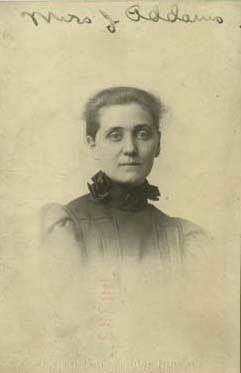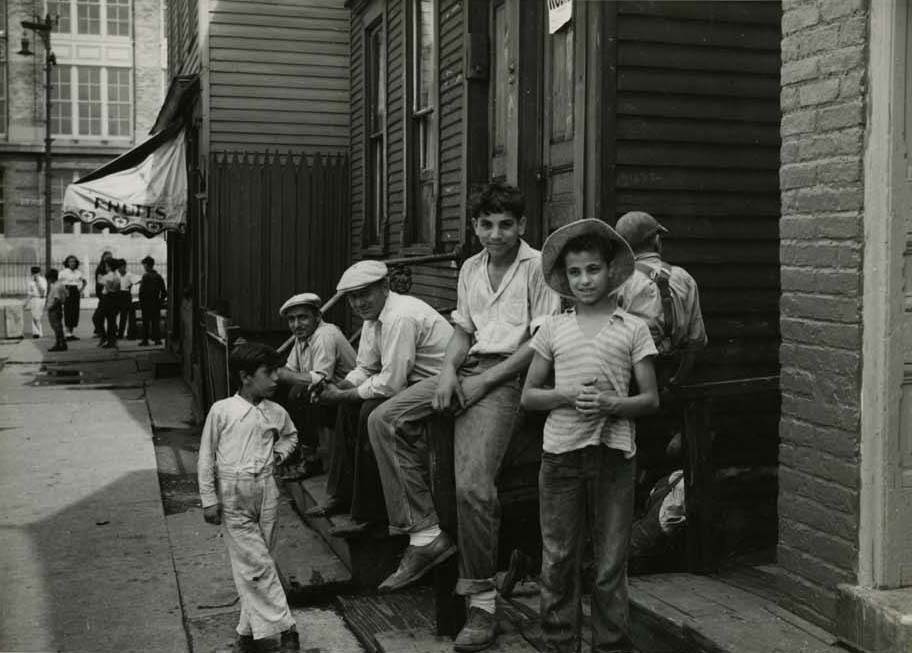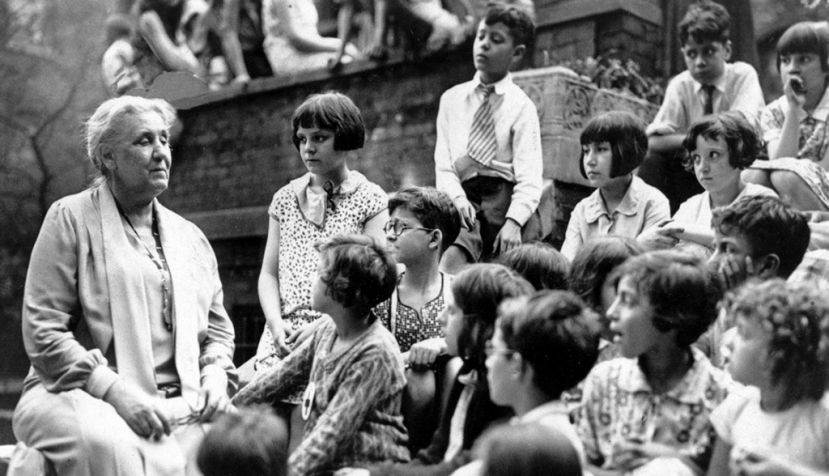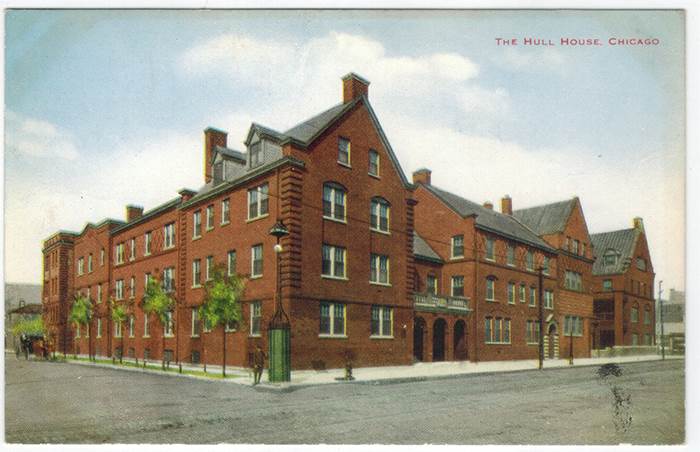Jane Addams returned to Illinois from a life-altering trip to London in early 1889. While overseas, she had visited the city’s depressed East End working-class district. Her visit to Toynbee Hall, a settlement house that provided adult education programs and improved living conditions for the working class, inspired Addams and her partner to open Hull-House in Chicago on September 18, 1889.
Their project started on the first floor of the old Hull-Mansion on South Halsted Street, where they dealt with many of the same issues of inequity that industrialism and Market Revolution had wrought on London’s East End. Hull-House offered work training programs, daycare for working-class children, art and music classes, as well as language classes for newly arrived immigrants. Its relationship with working-class Chicago also made it a meeting place for unions.
 Jane Addams (Abraham Lincoln Presidential Library and Museum)
Jane Addams (Abraham Lincoln Presidential Library and Museum)
Though she dedicated herself to improving working-class lives, Jane Addams had grown up in an affluent household. Born near Freeport in the village of Cedarville, Addams’s father was the wealthiest man in town. Growing up, she absorbed middle-class ideals like stewardship, temperance, and utility, but she and her generation would interpret those ideals differently than their parents.
The middle class emerged out of the Market Revolution in the United States and Europe in the early-to-mid-1800s. These middling people did new sorts of jobs, such as operating retail stores, that situated them between producers and consumers. They also began to see themselves as morally superior to the working-class people who labored at physically taxing jobs by day and often drank in taverns by night. Similarly, middling Americans saw themselves as superior to wealthy, upper-class people, who they saw as lazy and unproductive.
Jane Addams’s generation continued to subscribe to this middle-class identity. Instead of merely using this sense of superiority to differentiate themselves, however, Addams and her middle-class peers made a concerted effort to export their ideology to the rest of American society. With its programs emphasizing the arts and self-improvement and its politics that supported public health, education, and public spaces for recreation, Hull-House was an engine for exporting these values.
 Over time Hull-House grew into a thirteen-building complex. Here, Children sit outside a Hull House building on Elburn Street (ALPLM).
Over time Hull-House grew into a thirteen-building complex. Here, Children sit outside a Hull House building on Elburn Street (ALPLM).
While she worked to improve working-class lives, Addams also encouraged cross-class respect. In her 1909 book, The Spirit of Youth and the City Streets, she lauded public recreation like baseball through which “men are lifted out of their individual affairs and so fused together that man cannot tell whether it is his own shout or another’s that fills his ears; whether it is his own coat or another’s that he is wildly waving to celebrate victory.” She asked her readers, “Does this not contain a suggestion of the undoubted power of public recreation to bring together all classes of a community in the modern city unhappily so full of devices for keeping men apart?”
 Jane Addams speaks to young Hull House visitors (Wikimedia Commons)
Jane Addams speaks to young Hull House visitors (Wikimedia Commons)
Addams continued her work in support of Progressive reform at Hull-House for the rest of her life and was awarded the Nobel Peace Prize in 1931. The Hull-Mansion is now the Jane Addams Hull-House Museum and a National Historic Landmark, a monument to Addams’s vision.
 A postcard showing the front of Hull House (Wikimedia Commons)
A postcard showing the front of Hull House (Wikimedia Commons)
Also this month in Illinois history…
September 9, 1836: After being examined by two Illinois Supreme Court justices, Abraham Lincoln was licensed to practice law in the state.
September 22, 1985: Champaign hosted the first Farm Aid concert and raised seven million dollars to help financially struggling farmers.
September 26, 1853: The first ever Illinois State Fair ended; it drew 20,000 attendees.
September 28, 1920: “Shoeless Joe” Jackson and seven of his Chicago White Sox teammates were indicted for throwing the 1919 World Series in exchange for money.
Jacob Friefeld is the Midwest research historian at the ALPLM.